Music in the "Sudeten-German" Expulsion
Musical practice offers valuable insight into the ways people build and rebuild lives in extraordinary times. This past year I gathered seventy stories from Sudeten Germans who were born in the border regions of former Bohemia, Moravia, and Sudetensilesia.1 They were expelled from those regions mainly to Germany at the end of Wold War II. I visited these Sudeten Germans to investigate how they used music and how that usage impacted their lives. The narrators, between 70 and 93 years old, vividly described their musical practices before the expulsion, the social upheaval and personal trauma of the expulsion, and the role that music played and continues to play in their efforts to come to terms with these experiences.
In this paper, I will feature the stories told to me by Elisabeth and Gustav Gromes. They refer to themselves as Lisl and Gustl.
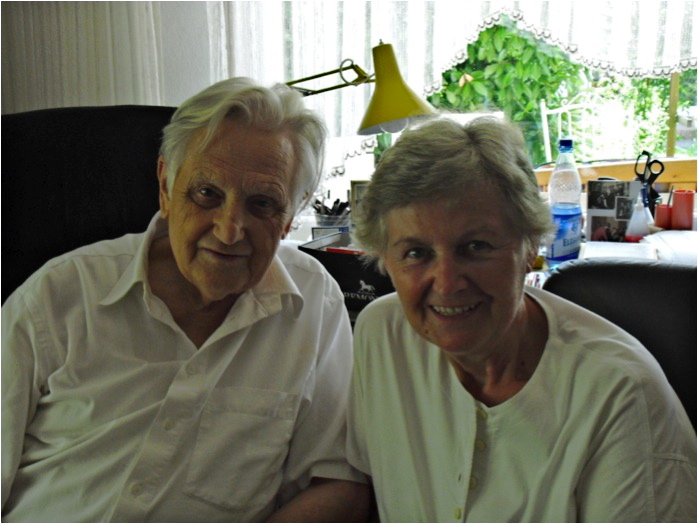
Figure 1: Lisl and Gustl Gromes. [Photograph by Ulrike Präger, 13 July 2010].
Lisl was born in Falkenau in 1935; Gustl in Mährisch-Schönberg in 1928. Falkenau and Mährisch-Schönberg are now situated in the Czech Republic. When Lisl and Gustl were born, these villages were part of Sudeten Germany and their inhabitants labelled as Sudeten Germans.
To understand Lisl and Gustl’s story, it is necessary to provide some background on German and Czech relations because Sudeten Germans and their expulsion are not necessarily known beyond European borders and among younger generations. This is surprising because over three million Sudeten Germans were expelled between 1945 and 1946 from Czechoslovakia mainly to Germany, Austria, and the Soviet Zone (later Eastern Germany) (Scheding 2010:1). In this “age of mass migration” (Said 2002:174), the Sudeten-German expulsion is estimated to be one of the largest forced refugee movements of a single population in the twentieth century (Institute for Research of Expelled Germans 2010:para.19). Perhaps this lack of awareness of Sudeten-German expulsion mirrors the general trepidation with addressing German struggles in post-war Germany (Scheding 2010:129), for the picture of Germans as victims of hardship is difficult to depict in light of their assumed affiliation with the Nazi party’s atrocities. Further complicating factors include the tension between the German and Czech governments and populations up to the present, and the restricted access to the Czech Republic before the overthrow of the communist government after the ‘Velvet Revolution’ in 1989.
Coexistence and Competition
Czechs and Germans have been related through the Romanic-Germanic-Slavic alliance of populations since the Middle Ages. In the twelfth century, Germans settled in the barren border regions of the Czech lands. Czechs and Germans fostered an interrelation in which both countries used each other to consolidate their power in Europe. As more Germans settled in the border regions, their cultural power became prevalent, which created tension between the populations. German culture in the Czech lands—which was closely related to imperial Vienna during the Austro-Hungarian Empire—nurtured sophisticated musical practices through coexistence and competition with the Czech population. Bruno Nettl notes that “at times the Czechs succumbed, as many of them took German as their first language and became culturally German. But mostly they fought back, striving to maintain their Czech ethnicity, and they did this by promulgating their music and also becoming excellent musicians” (2002:270). By 1945, more than three million Sudeten Germans lived in Prague and in the border regions of Bohemia, Moravia, and Silesia, which constituted about 23 percent of Czechoslovakia’s inhabitants (Koch 1998:1597).
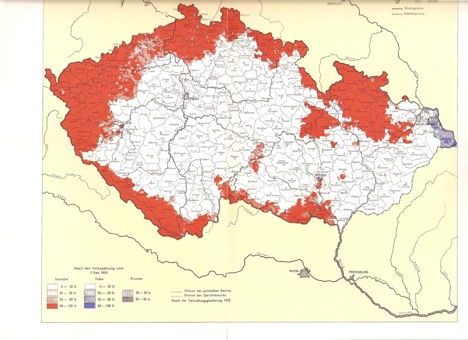
Figure 2: Sudeten Germans (red) living in Czechoslovakia 1930. [Map received from a participant in July 2010.]2
In the late nineteenth century, when the term “Sudeten German” was established, a distinct Sudeten-German ethnic consciousness developed. The label Sudeten German superseded the former politically charged names Deutschböhmen (German Bohemians) and Deutschmähren (German Moravians). These terms implied German superiority and their use was penalized by the Czech Ministry of Interior after 1918 (Hader and Fuchs 1998:1406). German institutions had to be amended by the label “Sudeten” in order to be clearly distinguishable from any institution of Czech origin. The term Sudeten German is related to these problematic times; therefore, it is politically and emotionally charged and its contemporary usage is contested.
This emerging Sudeten-German consciousness in the early twentieth century was, however, not reflected in a distinct Sudeten-German musical repertoire (Koch 1997:24). Music practiced by Sudeten Germans showed a hybridized character that displayed Austrian and German musical traits frequently combined with Czech and German folkloric characteristics (Koch 1997:31).3 Even though Sudeten-German music is not clearly distinct from German music, Sudeten Germans did use music and musical practices to formulate their own identity.
When asked about this time period and music’s role in it, Lisl and Gustl described the musical practices in their homeland as vital and sophisticated. Their small home towns maintained an orchestra, music theatre, and folk music ensembles. Family music making was a formative experience for them both. On long winter nights, when their duties as farmers were not required, the families all met for spinning and other craftwork in one home (to keep the heating costs low) and entertained themselves with music and dance. Gustl can still sing hundreds of folk songs by heart. He says “we grew as human beings and we grew together through the music and the texts of the songs.” Gustl’s sense of identity and home is expressed more formally by musicologist Hugo Kinzel in the first issue of the Musikblätter der Sudetendeutschen in 1936: “This magazine aspires to have its own, unique character, which is based on a specific Sudeten-German manner and founded in the Sudeten Germans’ cultural-political situation and historical destinies” (1).4 Although this perception of a Sudeten-German identity can be seen as typical for its time, it has since substantially changed. Musicologist Rudolf Quoika argues that a distinct Sudeten-German music and music history is not apparent, for the Sudeten-German “tribe” simply did and does not exist (1956:9). This notion is today still subject to heated discussion in circles concerned with Sudeten-German history and culture. Should the Sudeten Germans be considered a distinct ethnic group? And if so, are they only distinct because of their expulsion?
Expulsion and Common Destiny
After the Munich Agreement in September 1938, the Sudetenland was annexed by Germany, which dissolved the Sudeten-German diaspora and integrated Sudeten Germany into the greater German Reich. After Germany lost the Second World War, the Sudetenland was given back to Czechoslovakia and the expulsion of three million Sudeten Germans began. Families, friends, and neighbours were separated, dispossessed, and expelled primarily to Germany, Austria, and the Soviet Zone, where they were assigned to live with families who were mainly farmers.
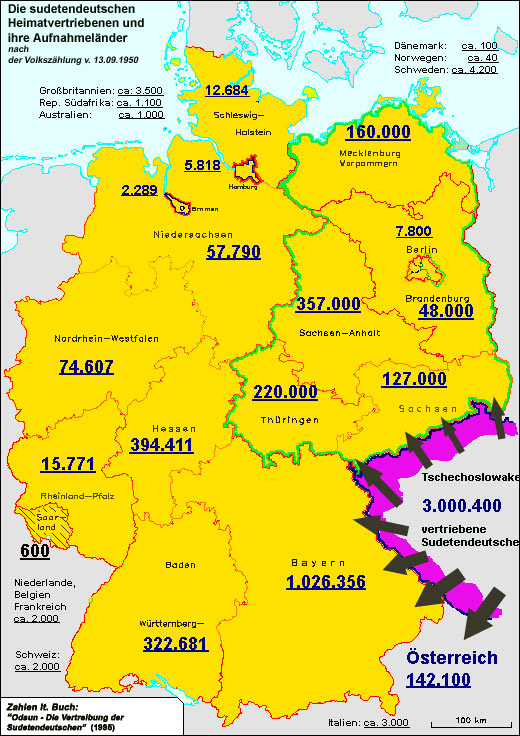
Figure 3: The Sudeten Germans and their countries of arrival. [Source accessed, 20 April, 2010].
But not all Sudeten Germans were expelled. Those from mixed marriages could choose either to stay or leave. Skilled Sudeten Germans, such as industrial workers, were forced to stay, many of whom emigrated later to West Germany. After the expulsion, the German cultural heritage in Czechoslovakia “naturally declined and disappeared” (Nettl 2002:284). Villages with dual names dropped their German forms: Reichenberg changed to Liberec. Composers with variant name spellings such as Stamitz took on the Slavic version, Stamic, in order to return to the realm of Czech culture (Nettl 2002:284). Those of my interviewees, who stayed in Czechoslovakia, reported that singing or speaking in German was frowned upon and caused serious disadvantages in daily life until 1989. German songs or words were only heard behind closed doors. One participant played a tape for me that was secretly recorded by his Sudeten-German friends in a Czechoslovakian church in the 1960s. In this example, Amalie Stonjek and Anna Hartmann sing a folk song describing their home, the former Sudetenland.
Audio 1: “Tief im Tale,” recorded in 1966 in the Church of Gießhübel in the Eagle Mountains, Czechoslovakia
A particularly strong formulation of Sudeten-German identity occurred after the displacement due to the notion of Schicksalsgemeinschaft (common destiny) (Koch 1997:24), which was frequently displayed in musical practices. After the assembly ban for expellees was lifted in the late 1940s, Sudeten Germans immediately founded choirs and instrumental ensembles. My participants explained that these musical gatherings revitalized memories of the homeland and reconstructed personal and collective identities through music while developing a feeling of home and comfort. Commonly known dances, folk tunes, and art music from Sudeten-German composers paired with their musical style, operated as a vehicle essential for social and cultural expression in the new homeland. One such group was founded by Gustl and his siblings.
Video 1: Lisl and Gustl Gromes describe the musical group they founded. [Recorded on 13 July 2010 by Ulrike Präger].
In this video, Lisl and Gustl explain:
My father had his birthday at Griesheim in 1947. The owner of the farm, where we were assigned to, did not allow us to make music. So we went to a restaurant. There we ran into friends that belonged to an association for expellees that my father founded. There was also a priest whom my mother knew from the concentration camp at Olmütz. We siblings began to sing for my father, and then the priest said: ‘you need to keep doing this! Our people are waiting for their music but dare not ask for it!’ This is when we started our group. This was the beginning. We siblings knew how to sing. We had always sung in three parts back home while washing the dishes. We invited other Sudeten Germans to join our group. Many walked from far away to sing with us. Your group first called themselves the Gromes Siblings. Because the Allies did not allow Germans to assemble in large groups. We were called the Gromes Siblings but we always performed with at least sixteen other people.
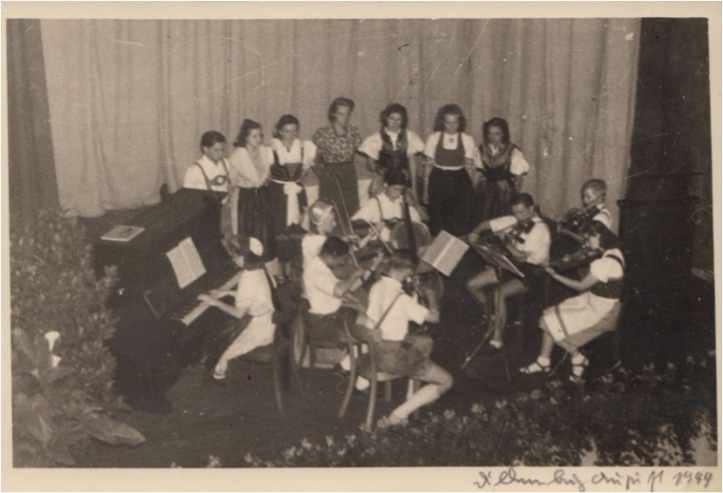
Figure 4: Performance of the Gromes Siblings in 1949 (later called Adalbert-Stifter Gruppe). [Private photo collection of Lisl and Gustl Gromes].
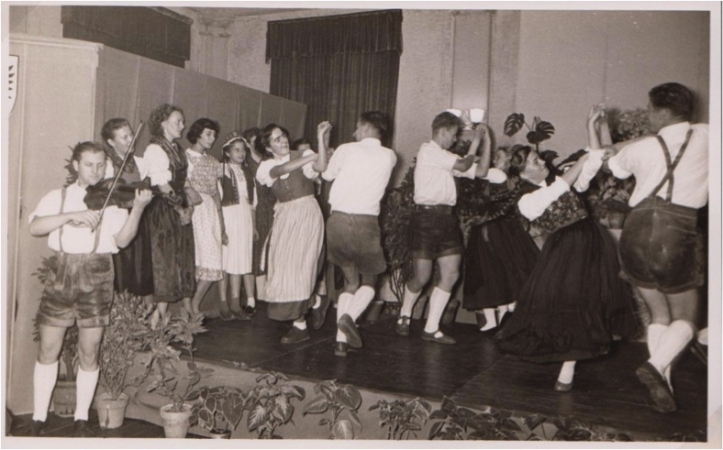
Figure 5: Performance of the Adalbert-Stifter Gruppe in 1956; Gustl plays the violin on the left. [Private photo collection of Lisl and Gustl Gromes].
The Gromes Siblings was only one of the many groups that went on so-called emergency missions to sites where displaced Sudeten Germans struggled under poor conditions. The groups brought music and dance that eased the burden of expulsion and sparked memories of “the homeland.” According to my interviewees, these “mission trips” also evoked problematic consequences for the Sudeten-German integration. Music for the Sudeten Germans took on both an integrating character for members of a group and an excluding character for non-members. Nettl asserts that music plays a role in negotiating relationships between unequals, as a way for a dominant group to reinforce its hegemony, or for a subordinate population to fight back at some level (2002:256). Sudeten Germans, however, are not typical for displaced populations, for they were not “strangers in strange lands” (Safran 1991:86). Unlike most displaced populations, they made fewer cultural and linguistic sacrifices. Their language is spoken in the new place and their religion, Catholicism, is the prevailing creed (Safran 1991:87-8). Despite these commonalities, my interviewees revealed that Sudeten-German integration—especially in the beginning—was often difficult. Sudeten Germans spoke, for example, different dialects from the ones customary in Germany. The expulsion, however, did initiate a cross-cultural dialogue between the host and the migrant population, which eventually caused a merging of their musical practices.
Justine Schüssel explains how music defined and preserved Sudeten-German identity amidst the uneasy process of German and Sudeten-German transculturation:

Figure 6: Justine Schüssel at 89 years old. [Photograph by Regine Schüssel, 09 November 2011].
Music making and the opportunity to get over our homesickness was the first motivation to establish those meetings. We were mainly Sudeten Germans and later we mixed with the local people. We had the opportunity to introduce them to our music and our ways of music making, and we received recognition from them. We needed this and it certainly helped our integration. We sang together in double choirs and made excellent music. These groups are still together today, but not many of us are still alive. (Justine Schüssel, private conversation, 13 July 2010)
The Assimilated Diaspora: Where are the Sudeten Germans Now and Where Do They Meet?
Sudeten Germans, whose consciousness of the lost home is still prevalent in their lives, demonstrate a continuing desire to preserve their traditions. Maintaining practices in music ensembles revitalizes and preserves memories of a homeland long lost and upholds an idealized past. For those born after the expulsion, these same practices internalize pasts lived by the elderly, but only imagined by younger generations. Although the expulsion fostered the retention of specificities of the expelled (Schnapper 1999:235), expulsion frequently requires a reinterpretation and reinvention of culture due to the complex relationships between host and migrant community.
This reinterpretation of culture happens for Sudeten Germans not only in private but also in Sudeten-German events, such as the annual meeting, which in 2011 was attended by 20,000 Sudeten Germans.5 They are officially called the Vierter Bayerischer Stamm (fourth Bavarian tribe) and have stood under the protection of the Bavarian government since 1962.6 Their culture will also be expressed in the planned Sudeten-German museum and in the Sudeten-German Music Institute founded in 1991. The following screen shots from videos show three different examples of where and how the revitalizing of culture takes place in contemporary Sudeten-German culture”:
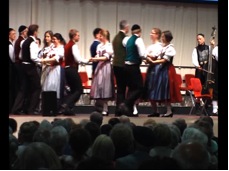
Figure 7: Annual Sudeten-German Meeting in Augsburg, 2010. Sudeten Germans dance for other Sudeten Germans on stage. Cultural practices are displayed as art objects. [From video recorded on 22 May 2010 by Ulrike Präger].
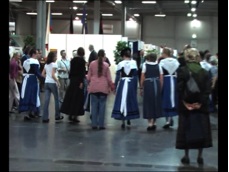
Figure 8: Sudeten-German Annual Meeting in Augsburg, 2010. Sudeten Germans sing and dance spontaneously in a different room accompanied by live music. Everyone can participate. [From video recorded on 22 May 2010 by Ulrike Präger].
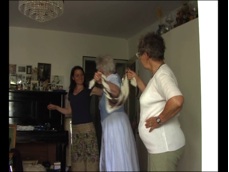
Figure 9: Sudeten Germans practice their traditions in a private setting and teach the author dances. [From video recorded on 09 June 2010 by Ulrike Präger].
Contemporary Sudeten-German identity is a hybrid construction rooted in the “old” homeland and in the shifted refugee identities in the “new” homeland. The ethnic boundaries between Sudeten Germans and Germans changed slowly but significantly after the expulsion through amalgamation—“through the union of two or more groups to form a larger unit which differs from any of the component parts” (Schramm 1979:5). Sudeten Germans are now integrated and mostly undistinguishable from the host population. They are living in what I call an “assimilated diaspora.”
What does this mean for Sudeten-German musical practices? Did the Sudeten Germans lose or shift personal and collective identities and can this be observed and described in musical terms? Tsuda argues that despite retaining distinct ethnic identities, the assimilation caused a loss of much of the Sudeten-German cultural heritage, including music (2009:4). My experiences so far confirm that Sudeten-German musical practices change and repertoire even disappears. Meanings and arrangements of musics are frequently altered in the new environment. However, through the foundation of private and official institutions, the Sudeten-German heritage is officially protected and has flourished over the last sixty years.
Of course, for the expelled, the picture is a different one. Music, as connected to their homeland, only exists in their memories. Most of my interviewees are concerned about a loss of their cultural heritage. This led Edith Koch for example, to embark upon a private five-year recording project in the 1980s. She learned to play the guitar auto-didactically and produced dozens of tapes preserving songs that reminded her of her homeland. In the process of producing these tapes, she recorded a song with guitar accompaniment on a tape recorder and then sang a second part to this recording, all of which was recorded again. She says that not many people have ever seen or listened to these tapes.
Audio 2: “Feierobnd,” composed by Anton Günther in 1903
Empowerment
Most of my interviewees reported openly about the processes of war, displacement, and assimilation and the role of music in these major occurrences. The narrators expressed a sense of empowerment as they shared their life stories, which they enhanced with photographs, music recordings, and diaries as well as live music making and dancing. The interviews demonstrated an active response by the displaced to their displacement, a response of individuals, whose overall story has mostly been told only in generalized displacement studies.
The participants found themselves compelled to negotiate between individual and collective memories in our conversations. In their narratives, memory and written history were interwoven, though not always congruent because of the inevitable tension produced between subjective experience and historiography (Assmann 1999:35). In our dialogue, I see music as a thread that spurs remembrance while leading the interviewee through the story of her/his life.
At the end of the day, I ask Gustl to play a piece on his violin that best resembles his perception of home, which he labels as “multilocal.” He describes an “old” lost home and a “new” home. I expect him to either play a Sudeten-German folksong originating from his “old” home North Moravia or a piece that combines old and new home such as one of his compositions (which he describes as being influenced by Eastern musical characteristics). To my surprise, Gustl chooses the second movement of Dvořák’s ninth symphony “From the New World.” His choice expresses his sense of his past, in which cultural practices established separate communities that were also able to relate to each other. When he stops playing, Gustl pauses and says: “This music made an impression on me. [pause] We have to thank each other, [pause] the Czechs and the Germans.”
Musical and cultural themes emerge from this investigation, such as music’s role in the processes of expulsion and acculturation, music as a marker of place and identity, and the concepts of “multilocality” (Zheng 2010) and transculturalism--which in this case is negotiation between Germans and Sudeten Germans in Germany and between remaining Sudeten Germans and Czechs in Czechoslovakia. Broader implications of this study will facilitate an understanding of the phenomenon of expulsion and how music is able to reflect and reframe it.
References:
Assmann, Aleida, and Ute Frevert. 1999. Geschichtsvergessenheit-Geschichtsversessenheit: vom Umgang mit deutschen Vergangenheiten nach 1945. Stuttgart: Deutsche Verlags-Anstalt.
Bohlman, Philip V. 2002. “Landscape-Region-Nation-Reich: German Folk Song in the Nexus of National Identity.” In Music and German National Identity, edited by Celia Applegate and Pamela Potter, 105–127. Chicago and London: The University of Chicago Press.
Hader, Widmar, and Josef Fuchs. 1998. “Sudetendeutsche Musik.” In Lexikon zur Deutschen Musikkultur Böhmen Mähren Sudetenschlesien, edited by Widmar Hader, 1404–1409. München: Langen-Müller.
Kinzel, Hugo. 1936. “Einführung.” Musikblätter der Sudetendeutschen 1(1):1–3.
Koch, Klaus P. 1997. “Deutsche Musik in Böhmen, Mähren und Sudetenschlesien.” In Deutsche Musik in Ost-und Südosteuropa, edited by Gabriel Adriányi, 17–36. Köln: Böhlau Verlag.
––––––. 1998. “Zwanzigstes Jahrhundert.” In Lexikon zur Deutschen Musikkultur: Böhmen, Mähren, Sudetenschlesien, edited by Widmar Hader, 1596–1609. München: Langen-Müller.
Nettl, Bruno. 2002. “Ethnicity and Musical Identity in the Czech Lands: A Group of Vignettes.” In Music and German National Identity, edited by Celia Applegate and Pamela Potter, 269–287. Chicago and London: The University of Chicago Press.
Quoika, Rudolf. 1956. Die Musik der Deutschen in Böhmen und Mähren. Berlin: Merseburger.
Said, Edward. 2002. “Reflections on Exile.” In Reflections on Exile and Other Essays, edited by Edward Said, 173–86. Cambridge: Harvard University Press.
Safran, William. 1991. “Diasporas in Modern Societies: Myths of Homeland and Return.” Diaspora 1(1):83–99.
Scheding, Florian. 2010. “‘The Splinter in Your Eye’: Uncomfortable Legacies and German Exile Studies.” In Music and Displacement: Diaspora, Mobilities, and Dislocations in Europe and Beyond, edited by Erik Levi and Florian Scheding. Lanham, Maryland and Toronto: Scarecrow Press.
Slobin, Mark. 1994. “Music in Diaspora: The View from Euro-America.” Diaspora 3(3):243–252.
Schnapper, Dominique. 1999. “From the Nation-State to the Transnational World: On the Mapping and Usefulness of Diaspora as a Concept.” Diaspora 8(3):225–255.
Schramm, Adelaida Reyes. 1979. “Ethnic Music, the Urban Area, and Ethnomusicology.” Sociologus 29:1–17.
Tsuda, Takeyuki. 2009. “Introduction.” In Diasporic Homecomings. Ethnic Return Migration in Comparative Perspective, edited by Takeyuki Tsuda, 1–20. Stanford, CA: Stanford University Press.
Zheng, Su. 2010. Claiming Diaspora. Music, Transnationalism, and Cultural Politics in Asian/ Chinese America. Oxford: University Press.
Websites:
Augsburg Wiki. “Sudetendeutscher Tag.” http://www.augsburgwiki.de/index.php/AugsburgWiki/SudetendeutscherTag. Accessed 20 September, 2011.
Institute for Research of Expelled Germans. "The history and removal of Czechoslovakia's Germans through expulsion and discriminatory laws." http://expelledgermans.org/sudetengermans.htm. Accessed 20 February, 2010.
“Map of the Czech Republic.” http://www.google.com/imgres?imgurl. Accessed 19 February, 2011.
“The Sudeten Germans and their Countries of Arrival.” http://wiki-de.genealogy.net/B%C3%B6hmen/Vertreibung_aus_B%C3%B6hmen_1945-1946_%28Odsun%29. Accessed 20 April, 2010.
- 1. The term Sudeten German in my title is presented in quotation marks because, in contemporary usage, it is contested. The term was coined in the late nineteenth century. However, it was mainly used since the foundation of Czechoslovakia after World War I. As discussed later in this paper, the label Sudeten-German superseded the former politically charged names Deutschböhmen (German-Bohemians) or Deutschmähren (German-Moravians). Any Bohemian or Moravian connection to Germans and Germany was condemned since the foundation of Czechoslovakia. The term is also problematic because of the geographical characteristics of the Sudetenland. It is composed from various localities in the Czech border regions, separated by mountains. Each Sudeten-German region developed its distinct dialect, ways of living and musical practices. Therefore Sudeten Germans have geographically never been a unified group. Probably, the inhabitants of the former Sudetenland should now be labeled Germans from Bohemia, Moravia and Sudetensilesia.
- 2. This map is an attempt to indicate the German/ Czech language borders in Czechoslovakia, which are contested because scholars today do not affirm that the borders have been that distinct.
- 3. This is due to the close relationship between the Austro-Hungarian Empire and the Kingdom of Bohemia in the nineteenth century.
- 4. Music Journal of the Sudeten Germans. Translation of the German citation by Ulrike Präger, October 15, 2010.
- 5. The Sudeten-German meeting takes place annually at Pentecost weekend. In the 1950s, the meeting was attended by up to 300.000 Sudeten Germans. 180.000 Sudeten Germans attended in 1977 and 20.000 in 2011. http://www.augsburgwiki.de/index.php/AugsburgWiki/SudetendeutscherTag. Accessed, 20 April, 2010.
- 6. The four Bavarian tribes are: Altbayern (Oberbayern, Niederbayern, Oberpfalz), Schwaben, Franken, and Sudetendeutsche.




